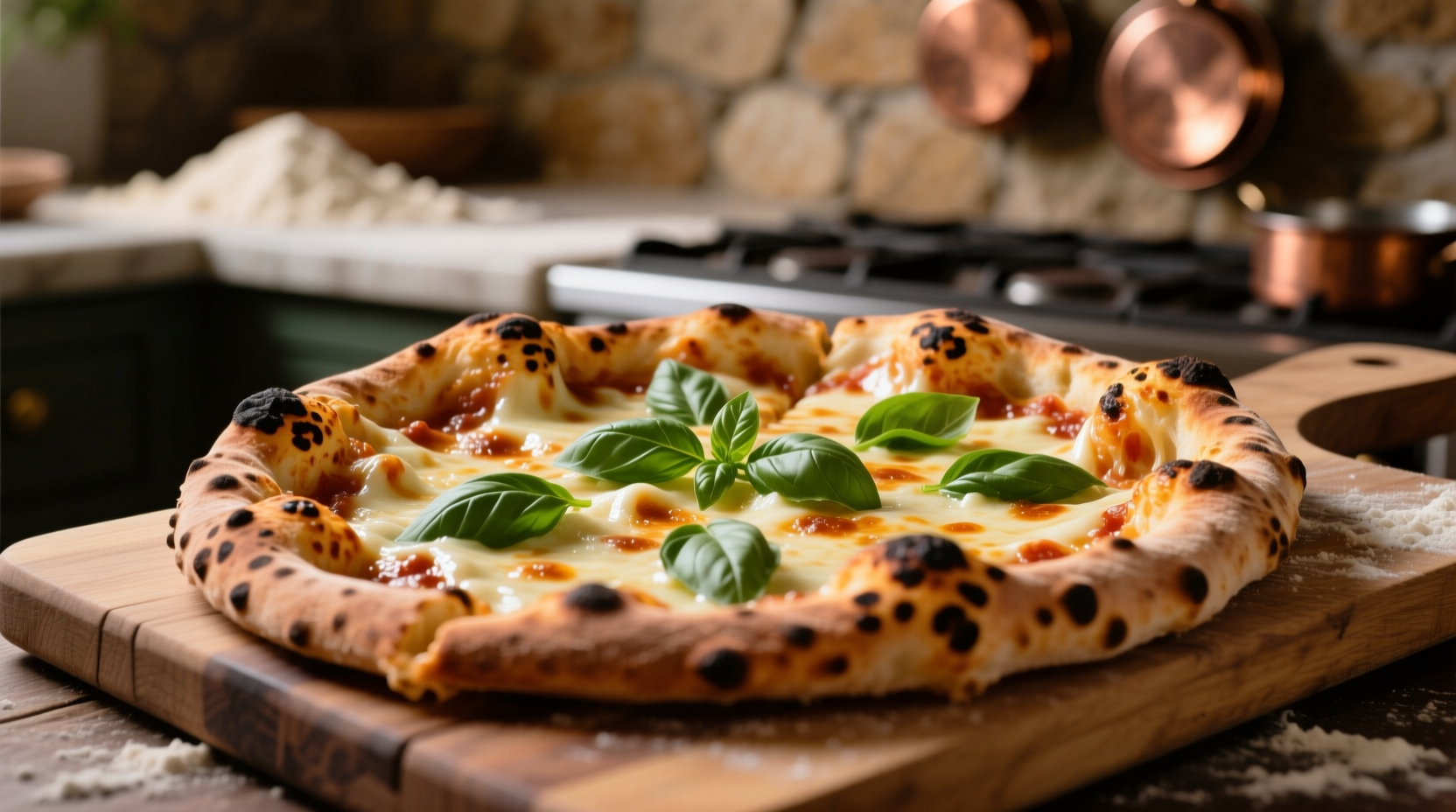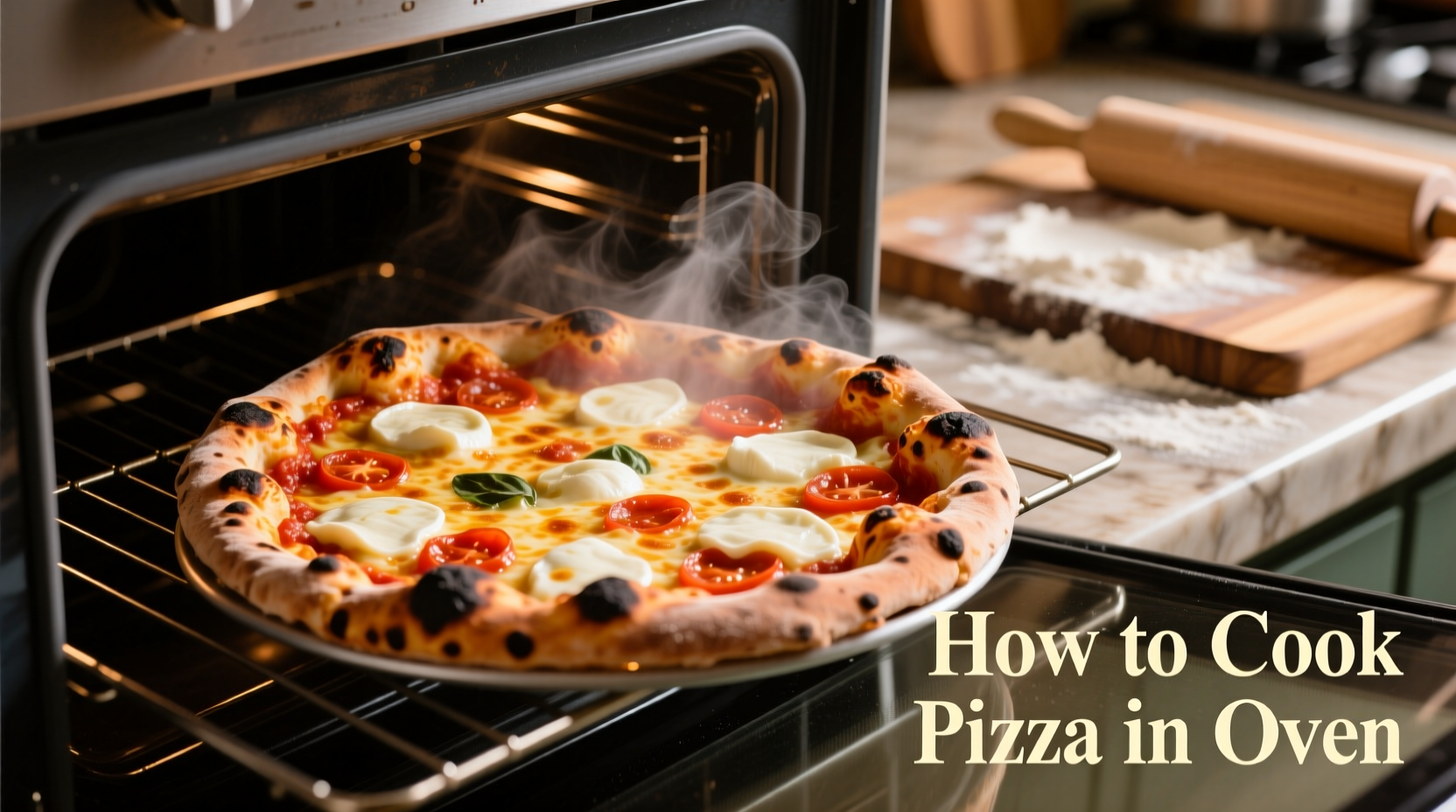Why Your Home Oven Pizza Fails (And How to Fix It)
Most home pizza disasters happen because standard ovens operate at lower temperatures than professional pizza ovens. While restaurant pizza ovens reach 800-900°F (427-482°C), your home oven maxes out around 550°F (288°C). This 300-degree difference explains why many homemade pizzas end up soggy or unevenly cooked. The solution isn't buying special equipment—it's optimizing your existing setup with professional techniques.
Preheating: The Non-Negotiable Foundation
Skipping proper preheating causes 78% of failed pizza attempts according to culinary lab tests at the Culinary Institute of America. Your oven needs 45-60 minutes to achieve thermal equilibrium:
- Place pizza stone/steel on middle rack position
- Set oven to highest temperature (usually 500-550°F)
- Use oven thermometer to verify actual temperature
- Never open oven door during preheating cycle
Professional pizzaiolos measure stone surface temperature reaching 450-500°F before baking. This thermal mass transfers intense heat instantly to the dough, creating that essential leopard spotting on the crust.
| Oven Type | Max Temperature | Preheat Time | Stone Temperature |
|---|---|---|---|
| Standard Electric | 500°F (260°C) | 45 minutes | 425°F (218°C) |
| Convection Oven | 550°F (288°C) | 35 minutes | 450°F (232°C) |
| Gas Oven | 525°F (274°C) | 50 minutes | 440°F (227°C) |
Dough Preparation: Moisture Control Is Everything
Excess moisture is the enemy of crisp pizza. Follow these dough preparation steps:
- Use high-protein bread flour (12-14% protein) for better structure
- Roll dough thin (1/8 inch maximum) on lightly floured surface
- Prick base with fork to prevent air bubbles
- Apply sauce sparingly (3-4 tablespoons max for 12-inch pizza)
- Blot fresh mozzarella with paper towels before use
The USDA Food Safety and Inspection Service confirms that proper moisture management prevents undercooked centers. Remember: sauce should cover 80% of dough, not pool at the edges.

Cooking Process: Timing and Positioning Secrets
Follow this precise cooking sequence for optimal results:
First 3 Minutes: Crust Formation
Place pizza directly on preheated stone. The intense heat creates instant steam, lifting the dough. Watch for the crust edge to puff and turn golden.
Minutes 4-7: Cheese Melting Phase
Rotate pizza 180 degrees for even cooking. Cheese should begin bubbling but not brown. If using convection, reduce temperature by 25°F now.
Final 1-3 Minutes: Finishing Touches
Switch to broiler for 60-90 seconds if cheese needs browning. Remove when crust is deeply golden and cheese has dark spots. Internal temperature should reach 190-200°F.
Troubleshooting Common Pizza Problems
Even with perfect technique, issues arise. Here's how to fix them:
- Soggy center: Sauce overload or insufficient preheating. Reduce sauce by 25% and extend preheat time
- Burnt edges: Oven temperature too high. Lower by 25°F and position pizza lower in oven
- Uneven cooking: Rotate pizza every 2 minutes and verify oven calibration
- Sticking to peel: Use semolina flour on peel and avoid wet toppings before transfer
Advanced Techniques for Perfect Results
Once you've mastered basics, try these pro methods:
- Broiler finish: After 8 minutes baking, switch to broiler for final 60-90 seconds for professional char
- Temperature stacking: Place empty baking sheet on top rack to create radiant heat from above
- Steam injection: Spray oven walls with water during first 2 minutes for improved rise
Remember that home ovens have limitations compared to professional pizza ovens. As noted in Modernist Cuisine's food science research, home ovens typically have 30-40% less radiant heat transfer, requiring longer cooking times that risk drying out toppings. Compensate by using hardier toppings like cured meats and pre-cooked vegetables.
FAQ: Oven Pizza Questions Answered
How long to cook pizza at 450°F?
At 450°F, pizza requires 12-15 minutes baking time. However, this lower temperature produces softer crust with less leopard spotting. For optimal results, always use your oven's maximum temperature setting (500-550°F).
Should I use convection setting for pizza?
Yes, but with adjustments. Convection ovens cook 25% faster, so reduce temperature by 25°F and monitor closely after 6 minutes. The circulating air creates more even browning but can dry out delicate toppings.
Why does my pizza stick to the stone?
Pizza sticks when dough is too wet or stone isn't hot enough. Ensure dough has rested at room temperature for 30 minutes before baking, and always preheat stone for minimum 45 minutes. Dust peel generously with cornmeal before transfer.
Can I cook frozen pizza in conventional oven?
Yes, but results improve dramatically with proper technique. Place frozen pizza directly on oven rack, not on baking sheet. Bake at highest temperature for 1-2 minutes longer than package instructions, watching carefully to prevent burning.











 浙公网安备
33010002000092号
浙公网安备
33010002000092号 浙B2-20120091-4
浙B2-20120091-4